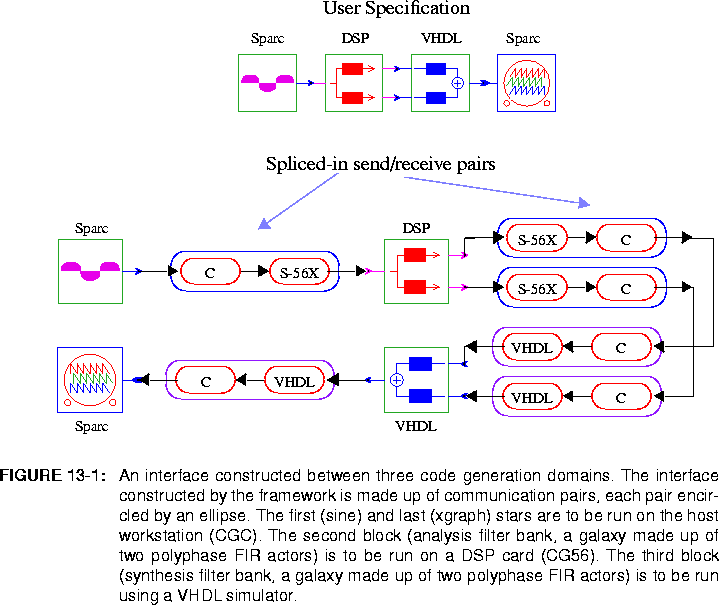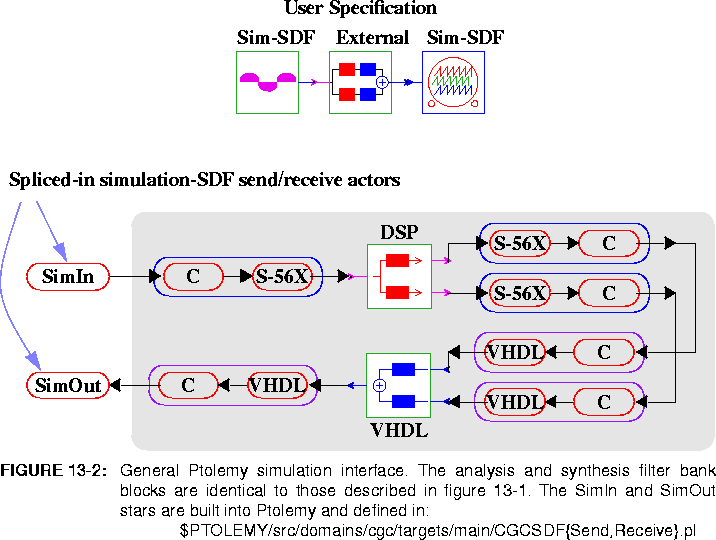









As with
Wormholes, we have developed a way to interface N targets without requiring N2 specialized interfaces. We do this by generating a customized interface (analogous to the universal EventHorizon in wormholes) that is automatically built by using communication stars supplied by each code generation target. This interface is generated in C (using the CGC domain) and runs on the Ptolemy host workstation.To support this infrastructure, a target writer needs to define two pairs of communication stars and add target methods which return each of these pairs. The framework will then build the interface by splicing in these stars as is shown in figure 13-1. These same actors are used when constructing an interface to a Ptolemy simulation target as shown in figure 13-2.

These communication stars, described in section 13.4.2, are a specialized form of send/receive stars. In addition to the previous assumptions in section 13.4.2, send/receive for this infrastructure must also define C code to control the target for operations such as downloading, initializing and (if applicable) terminating the generated executable.
One pair of communication stars must communicate from the target to the CGC code that will run on the Ptolemy host workstation. The other pair must communicate in the opposite direction. The CGC send/receive stars are typically defined from a common base communication star specific for each target. This common base defines the C code to control a target that was discussed in the previous paragraphs. Examples of send/receive stars that support this infrastructure can be found in:
$PTOLEMY/src/domains/cg56/targets/CGCXSend.pl
$PTOLEMY/src/domains/cg56/targets/CGCXReceive.pl
$PTOLEMY/src/domains/cg56/targets/CG56XCSend.pl
$PTOLEMY/src/domains/cg56/targets/CG56XCReceive.pl
$PTOLEMY/src/domains/vhdl/targets/CGCVSend.pl
$PTOLEMY/src/domains/vhdl/targets/CGCVReceive.pl
$PTOLEMY/src/domains/vhdl/targets/VHDLCSend.pl
$PTOLEMY/src/domains/vhdl/targets/VHDLCReceive.pl
CommPair toCGC(PortHole&);
CommPair is a communication pair, where one of the communication stars in a CGC star. The S56XTarget::fromCGC method, illustrates the typical code needed for these methods:
CommPair pair(new CGCXSend,new CG56XCReceive);
configureCommPair(pair);
return pair;
}configureCommPair function is defined in the S56XTarget.cc file and configures the S56XTarget communication stars.







